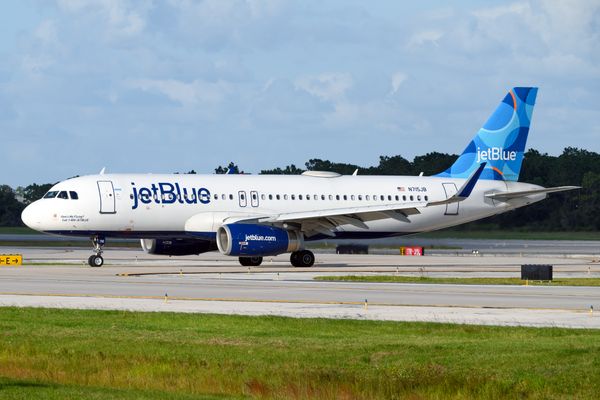When looking at the future of aerospace, one eye always has to be looking forward while the other is looking behind. Innovation requires learning from our previous actions to make decisions to advance our industry. However, a new framework of research and study has emerged across different industrial sectors that have the potential to direct the future of airline innovation. Multiple companies have introduced biomimicry, and it could provide some answers to the future of sustainable aerospace infrastructure and design.

According to the Biomimicry Institute, a leading research center, biomimicry is "the practice that learns from and mimics the strategies found in nature to solve human design challenges". Using biomimetics can provide alternative answers to questions that manmade algorithms may not. Although sounding methodical in definition, the practice is much more practical. Plant stability, geological developments, and bone structures are all examples of how biology has shaped the design structure through evolution and ecological progressions.
One of the ways biomimicry is practiced is by analyzing the physical makeup of animals and seeing how certain genetic advantages have allowed them to prosper throughout evolution. This can be something like, how can a bird fly quicker than others? Or how can a duck repel water while other birds cannot? These answers, when provided in the context of a manmade design element, are what can push innovation. Through the study of biomimetics, these questions have been asked through the lens of aviation, which leads researchers to take data provided by avians to analyze advancements in aerodynamics, speed, and air resistance.

In 2020, Airbus announced they would begin researching biomimicry to create a more efficient aircraft. As part of the announcement, Airbus said they would research geese for their V-shaped aerodynamic design, owls for their silence when flying, and sharks for using a fin in movement. Initial research of these animals resulted in DragonFly, a prototype designed through biomimicry. Although still in the design phase, this broke ground as the first aircraft the manufacturers developed through this science. The DragonFly was envisioned to help serve remote and hard-to-reach regions, mimicking a dragonfly's superior vision.
Additional research in early biomimicry studies found that certain design elements based on skeletal structures can lead to lighter aircraft. If certain areas of the vessel are enforced at stronger points, the rest can be made up of thinner and lighter materials, like a human skeleton keeping the body's shape. Lighter materials can result in less fuel usage and reduced carbon emissions. As sustainability efforts continue to be aircraft manufacturers' top focus, adopting new building habits might unlock new opportunities.

Although there is far more research and science to be done to use any of these initial tests or prototypes, it is fascinating to see a new approach to evolving the flying experience. Biomimicry may just be a fad or the future; who knows, but for now, it offers something different.
Air Premia Eyes Washington-Dulles Service for 2026 » Airbus Issues Urgent Safety Directive After Discovery of Solar Radiation Data Corruption Risk in A320 Family » Air Premia Confirms Washington D.C. as Next American Destination »
Comments (0)
Add Your Comment
SHARE
TAGS
INFORMATIONAL Innovation Science Biomimicry Future Technology EngineeringRECENTLY PUBLISHED
 My Unexpectedly Cheap Last-Minute Getaway with JetBlue Airlines
My name is Daniel Moreno. I live in Tampa, Florida, and I work as a logistics coordinator at a small distribution company. I had to book a JetBlue Airlines flight at the last minute. I was sure the price would be high because that’s usually what happens with late bookings within the United States. But the final cost surprised me — the ticket was much cheaper than I expected.
TRIP REPORTS
READ MORE »
My Unexpectedly Cheap Last-Minute Getaway with JetBlue Airlines
My name is Daniel Moreno. I live in Tampa, Florida, and I work as a logistics coordinator at a small distribution company. I had to book a JetBlue Airlines flight at the last minute. I was sure the price would be high because that’s usually what happens with late bookings within the United States. But the final cost surprised me — the ticket was much cheaper than I expected.
TRIP REPORTS
READ MORE »
 Air Premia Confirms Washington D.C. as Next American Destination
Air Premia will launch flights from Seoul to Washington-Dulles commencing on April 24, 2026, according to flight schedules. The 6,958-mile flight will operate on Mondays, Wednesdays, Fridays, and Sundays on its Boeing 787-9 Dreamliner.
ROUTES
READ MORE »
Air Premia Confirms Washington D.C. as Next American Destination
Air Premia will launch flights from Seoul to Washington-Dulles commencing on April 24, 2026, according to flight schedules. The 6,958-mile flight will operate on Mondays, Wednesdays, Fridays, and Sundays on its Boeing 787-9 Dreamliner.
ROUTES
READ MORE »
 Airbus Issues Urgent Safety Directive After Discovery of Solar Radiation Data Corruption Risk in A320 Family
Airbus has called for immediate precautionary action across all global operators of A320 Family aircraft following the discovery of a rare but critical vulnerability linked to intense solar radiation.
NEWS
READ MORE »
Airbus Issues Urgent Safety Directive After Discovery of Solar Radiation Data Corruption Risk in A320 Family
Airbus has called for immediate precautionary action across all global operators of A320 Family aircraft following the discovery of a rare but critical vulnerability linked to intense solar radiation.
NEWS
READ MORE »



